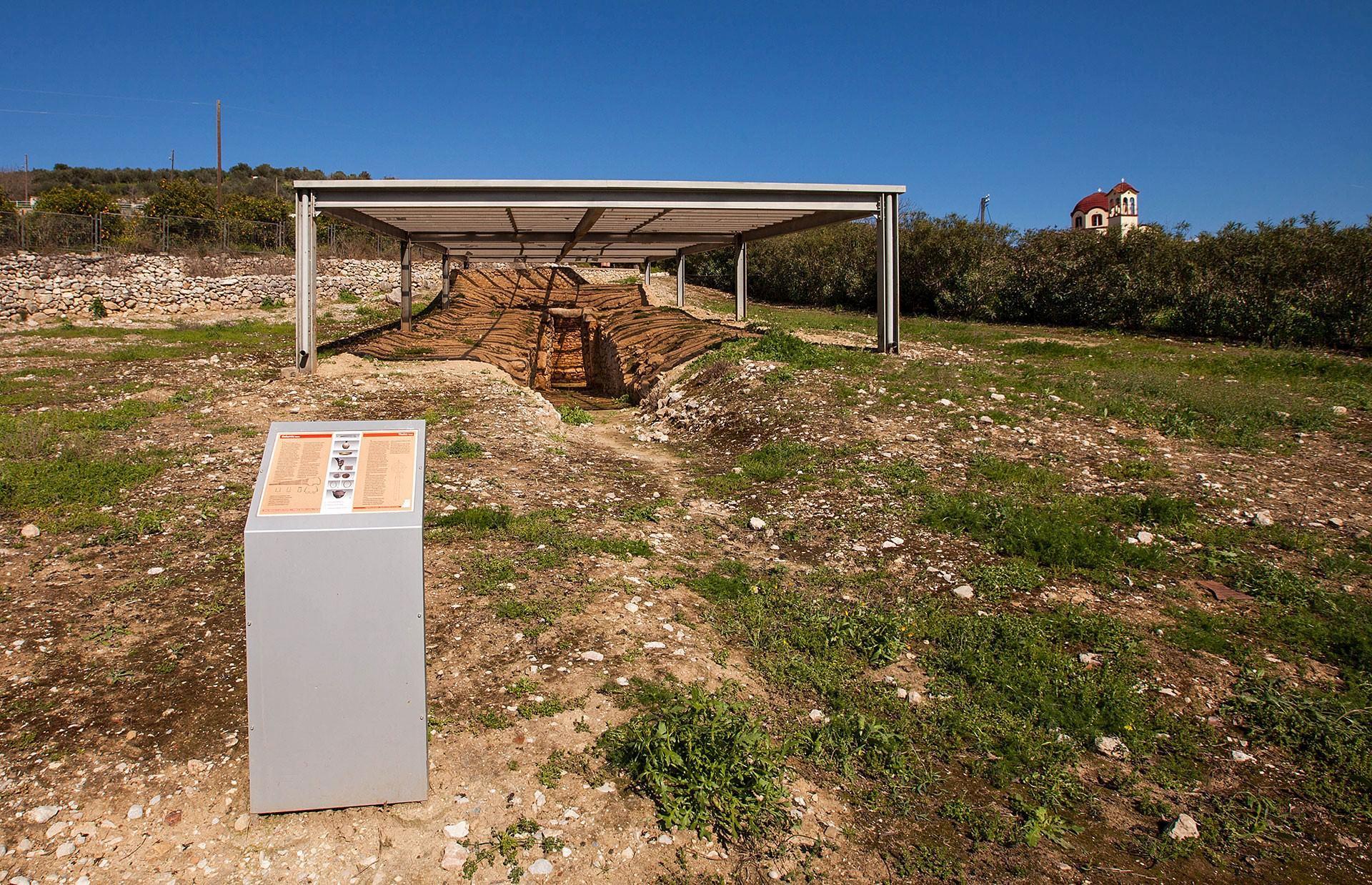
Mycenaean Necropolis at Dendra
The Mycenaean acropolis at Dendra spreads over the slope of a low hill, west of the Mycenaean acropolis of Midea. So far, the excavations from the end of the 1930s to the present day have uncovered one domed tomb and sixteen chamber tombs, which were cut into the soft rock of the area, in a dense arrangement.
The domed tomb was constructed in around 1400 BC. It consists of a slightly descending entranceway, 17.9m in length, 2.5m wide with an almost circular dome. The door to the tomb, at the eastern end of the entranceway, is framed by two monolithic limestone pillars, which have bases slightly jutting out. The entrance is topped by a stone lintel, the interior side of which is curved to follow the curved shape of the dome. Above the lintel, there was most likely a Kufic triangle.
The tomb's circular chamber is 7.3m in diameter and is covered by a dome which it is estimated rose to a height of 7m. The dome is built with successive series of red slates, large and squared in the lower layers and smaller higher up, wedged with small stones and without any form of mortar. The whole construction was most likely sealed by a large stone, which has not survived.
Four burial pits had been opened in the floor of the chamber. In these undisturbed graves there were male and female burials with a wealth of funeral gifts. Standing out amongst these gifts are a gold cup decorated with an octopus; a silver beaker with hunting scenes; a gold and silver cup of the Vaphio style, with the heads of bulls; a gold box; ostrich eggs; copper weapons; seals of agate, carnelian and jade; and jewellery of gold and semi-precious stones.
The chamber tombs had descending entranceways with converging walls and four-sided burial chambers, the mouths of which were sealed with bricks. Additional grave pits were often dug in the floors of the chambers and the entranceways, as these tombs were used for successive burials of members of the same family or dynasty. The monumental nature of the tombs and the rich grave gifts, the most splendid of which being the copper suit of armour, demonstrate a society with a complex structure. The ritual practices revealed by the burial of horses outside the tombs are especially important. The graveyard was in use mostly during the 15th and 14th centuries BC and was connected with the palace centre at Midea.



